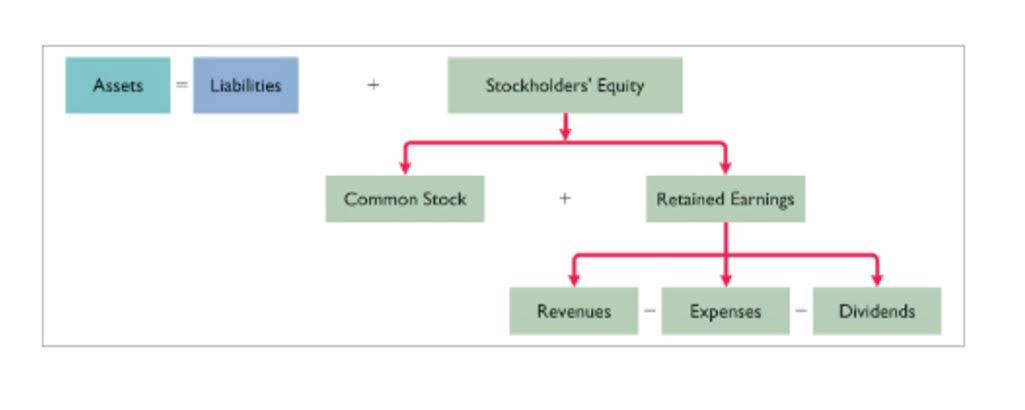For more information about or to do calculations involving a credit card, please visit the Credit Card Calculator. For more information about or to do calculations involving debt consolidation, please visit the Debt Consolidation Calculator. You can see the complete list of today’s Zacks #1 Rank (Strong Buy) stocks here.DTE’s long-term (three to five years) earnings growth rate is 6%. The Zacks Consensus Estimate for DTE Energy’s 2024 EPS implies a year-over-year rise of 16.8%.PNM’s long-term earnings growth rate is 4.6%.
Qualifying Debts
DTE Gas filed a rate case in January requesting a higher base rate by $266 million and an increase in its return on equity to 10.25%. In December 2023, the MPSC approved a 6.4% rate increase for DTE Electric, with revenues higher by $368.1 million but with the return on equity remaining at 9.9%. The initial request was for a $622 million raise, with a 10.25% return on equity. Gas revenues are decoupled, meaning they are granted a return on equity that is not sales dependent. According to Fitch DTE’s decoupling allows “full pass-through of fuel costs, forward-looking test years… and an infrastructure recovery mechanism to help DTE Gas reduce exposure to regulatory lag. A company that does not make use of the leveraging potential of debt financing may be doing a disservice to the ownership and its shareholders by limiting the ability of the company to maximize profits.
What Is the Debt-to-Equity Ratio?
Additionally, borrowers with a low DTI ratio are typically offered lower rates as they appear less risky to lenders and more likely to make on-time payments. One of the most important numbers that lenders look at when evaluating a mortgage application is your DTI ratio. It helps them determine whether or not a borrower can afford a loan and what interest rate they are likely to receive. As such, it’s important that you work to improve your income and debt levels to lower your DTI ratio.
How to Pre-Qualify for a Personal Loan
Your debt-to-income (DTI) ratio is a pivotal factor in qualifying for the lowest interest rates—and it’s easy to calculate. Credit utilization, or the amount of credit you’re using compared with your credit limits, does affect your credit scores. Credit reporting agencies know your available credit limits, both on individual loan accounts and in total. Most experts advise keeping the balances on your cards no higher than 30% of your credit limit, and lower is better. Lenders look at debt-to-income ratios because research shows borrowers with high DTIs have more trouble making consistent payments.
- What counts as a “good” debt-to-equity (D/E) ratio will depend on the nature of the business and its industry.
- Ideally, lenders prefer a debt-to-income ratio lower than 36%, with no more than 28%–35% of that debt going toward servicing a mortgage.
- According to Fitch DTE’s decoupling allows “full pass-through of fuel costs, forward-looking test years… and an infrastructure recovery mechanism to help DTE Gas reduce exposure to regulatory lag.
- DTE Energy has a 9.9% allowed return on equity for both the gas and electric utilities this year.
- The expected dividend per share is then discounted to today’s value at a cost of equity of 6.1%.
- In fact, debt can enable the company to grow and generate additional income.
DTE Earnings Estimates and Actuals by Quarter
In the banking and financial services sector, a relatively high D/E ratio is commonplace. Banks carry higher amounts of debt because they own substantial fixed assets in the form of branch networks. Higher D/E ratios can also tend to predominate in other capital-intensive sectors heavily reliant on debt financing, such as airlines and industrials. A D/E ratio of 1.5 would indicate that the company in question has $1.50 of debt for every $1 of equity.
Calculate the debt-to-equity ratio of the company based on the given information. The optimal debt-to-equity ratio will tend to vary widely by industry, but the general consensus is that it should not be above a level of 2.0. While some very large companies in fixed asset-heavy industries (such as mining or manufacturing) may have ratios higher than 2, these are the exception rather than the rule. Gearing ratios constitute a broad category of financial ratios, of which the D/E ratio is the best known. The personal D/E ratio is often used when an individual or a small business is applying for a loan.
A borrower’s credit history and credit score will also weigh heavily in a decision to extend credit to a borrower. An investor can also benefit from insider trades by learning what management is thinking about the future direction of stock prices. A recent insider transaction in https://www.bookkeeping-reviews.com/ this stock occurred on May 02 ’24 when Chavez JoAnn sold 3,000 shares for $111.52 per share. The transaction valued at 334,560 led to the insider holds 13,667 shares of the business. We take a closer look at DTE’s different ratios to gain a better understanding of the stock.
In other words, if your DTI ratio is 15%, this means that 15% of your monthly gross income goes to debt payments each month. A company’s management will, therefore, try to aim for a debt load that is compatible with a favorable D/E ratio in order to function without worrying about defaulting on its bonds or loans. Make Debt More Affordable—High-interest debts such as credit cards can possibly be lowered through refinancing. Another strategy would be to consolidating all high-interest debt into a loan with a lower interest rate.
This quick calculation provides a firm idea of whether you can qualify for a specific home loan program as many lenders impose a maximum DTI. Once you complete all fields, the calculator will provide you with your DTI ratio. Most mortgage lenders encourage a DTI what is a mortgage suspense account ratio of 36% or less for a conventional mortgage. DTE Energy’s earnings are expected to grow from $6.69 per share to $7.16 per share in the next year, which is a 7.03% increase. We believe everyone should be able to make financial decisions with confidence.
It is just one indicator used by lenders to assess the risk of each borrower to determine whether to extend an offer or not, and if so, the characteristics of the loan. A steadily rising D/E ratio may make it harder for a company to obtain financing in the future. The growing reliance on debt could eventually lead to difficulties in servicing the company’s current loan obligations. Very high D/E ratios may eventually result in a loan default or bankruptcy. If a company has a negative D/E ratio, this means that it has negative shareholder equity.
In fact, debt can enable the company to grow and generate additional income. But if a company has grown increasingly reliant on debt or inordinately so for its industry, potential investors will want to investigate further. We can see below that for Q1 2024, ending Dec. 30, 2023, Apple had total liabilities of $279 billion and total shareholders’ equity of $74 billion. Business owners use a variety of software to track D/E ratios and other financial metrics. Microsoft Excel provides a balance sheet template that automatically calculates financial ratios such as the D/E ratio and the debt ratio.
This allows businesses to fund expansion projects more quickly than might otherwise be possible, theoretically increasing profits at an accelerated rate. If both companies have $1.5 million in shareholder equity, then they both have a D/E ratio of 1. On the surface, the risk from leverage is identical, but in reality, the second company is riskier. The premise of the bot is not to take stop losses and to hold positions until the last hour or so on expiration day, assuming that they will expire worthless. If running LIVE, please beware that you may find yourself with a position that needs to be closed but the order won’t fill because the long legs has no buyers.
The debt-to-income ratio is the percentage of your monthly gross income that goes to paying your monthly debt payments. I expect DTE to continue its streak of dividend increases, but right now the 3.5% yield it offers is not compelling. Rowe Price U.S. Treasury Money (PRTXX) at 5.02% or Fidelity Government Money (SPAXX) at 5.05%.
These are the 2021 Series E 4.375% (DTG), the 2017 Series E 5.25% (DTW), and the 2020 Series G 4.375% (DTB). The DTW shares are due in 2077 but are redeemable after December 2022 at $25.00 per share. Distributions are paid quarterly and because these are interest payments, they are not eligible for preferred tax treatment. All these issues were rated BBB-, or lower investment grade, by Standard & Poor’s. DTG and DTW have NYSE a volume between 20,000 and 30,000 shares per day, while DTB’s volume is closer to 12,000 per day.
The company delivered an average earnings surprise of 2.2% in the last four quarters.PNW’s long-term earnings growth rate is 7.6%. The Zacks Consensus Estimate for 2024 EPS calls for a year-over-year improvement of 7.9%. Currently, California Water’s total debt to capital is 47.55%, better than the industry’s average of 54.76%.The time to interest earned ratio at the end of the first quarter of 2024 was 3.2. The ratio, being greater than one, reflects CWT’s ability to meet future interest obligations without difficulties. The company who takes advantage of this opportunity will, if all goes as projected, generate an additional $1 billion of operating profit while paying $600 million in interest payments.
Compared to the current share price of US$115, the company appears about fair value at a 7.2% discount to where the stock price trades currently. Valuations are imprecise instruments though, rather like a telescope – move a few degrees and end up in a different galaxy. The DTI ratio does not distinguish between different types of debt and the cost of servicing that debt. Credit cards carry higher interest rates than student loans, but they’re lumped in together in the DTI ratio calculation. If you transferred your balances from your high-interest-rate cards to a low-interest credit card, your monthly payments would decrease.
Budget—By tracking spending through a budget, it is possible to find areas where expenses can be cut to reduce debt, whether it’s vacations, dining, or shopping. Most budgets also make it possible to track the amount of debt compared to income on a monthly basis, which can help budgeteers work towards the DTI goals they set for themselves. For more information about or to do calculations regarding a budget, please visit the Budget Calculator.
To calculate your DTI, enter the debt payments you owe each month, such as rent or mortgage, student loan and auto loan payments, credit card minimums and other regular payments. Then, adjust the slider to match your gross monthly income (total income before any deductions). Debt-to-income ratio divides your total monthly debt payments by your gross monthly income, giving you a percentage. Your DTI ratio compares how much you owe with how much you earn in a given month.
Principal Securities Inc. bought a new position in DTE Energy during the fourth quarter worth about $54,000. Finally, Cullen Frost Bankers Inc. grew its stake in DTE Energy by 17.0% in the third quarter. Cullen Frost Bankers Inc. now owns 702 shares of the utilities provider’s stock valued at $70,000 after acquiring an additional 102 shares during the period.
Monthly debt payments are any payments you make to pay back a creditor or lender for money you borrowed. The DTI ratio can also be used to measure the percentage of income that goes toward housing costs, which for renters is the monthly rent amount. Lenders look to see if a potential borrower can manage their current debt load while paying their rent on time, given their gross income. Companies can also influence their D/E ratio by controlling what is classified as debt or equity in their financial statements.
At the center of everything we do is a strong commitment to independent research and sharing its profitable discoveries with investors. This dedication to giving investors a trading advantage led to the creation of our proven Zacks Rank stock-rating system. Since 1988 it has more than doubled the S&P 500 with an average gain of +24.20% per year. These returns cover a period from January 1, 1988 through April 1, 2024. Zacks Rank stock-rating system returns are computed monthly based on the beginning of the month and end of the month Zacks Rank stock prices plus any dividends received during that particular month.



 Record all expenses related to your interior design business. This includes materials, subcontractor costs, rent, utilities, and marketing expenses. By categorizing your expenses, you can gain insights into where your money is going. You can also identify any areas of overspending or potential cost savings.
Record all expenses related to your interior design business. This includes materials, subcontractor costs, rent, utilities, and marketing expenses. By categorizing your expenses, you can gain insights into where your money is going. You can also identify any areas of overspending or potential cost savings.


 By recording your income and expenses, you can track your cash flow. Then, you can make informed decisions about your business. Bookkeeping is crucial for any business, and interior design is no exception.
By recording your income and expenses, you can track your cash flow. Then, you can make informed decisions about your business. Bookkeeping is crucial for any business, and interior design is no exception.